Days 43, (44,) 45, and 46: You thought strudel was thin.
It seems I forgot to mention what was probably the most enjoyable aspect of making strudel, so allow me to regress for a moment. The thing which allows the dough to be stretched to such inconceivable dimensions is of course gluten. The fun part is getting that gluten to the appropriate emotional state to accommodate extension to such dramatic proportions. Where kneading is enough for bread dough, which needs the gluten to be strong enough to trap air but not much stronger, strudel's gluten obviously needs to be much more thoroughly developed and forgiving. The way you do this is to mix the dough, and then to bang the dickens out of it. You accomplish this is to grab the dough and then throw it - hard enough to use the word "slam" - against the table. Our recipe specified that this was to be done one hundred times; this number seemed a little arbitrary to me, but it was neither insufficient nor excessive, and it worked well. What this does is shock the gluten into formation by slamming the individual microscopic strands of it into one another so they adhere (basically), as opposed to kneading, which invites them together for a nice afternoon tea. As you might imagine, the room became a bit noisy for a short while, but the free therapy this activity provided lasted days.
During the week following strudel, our gaze narrowed to even thinner dough as we dedicated ourselves to four days with puff pastry, that Ionian column of the confectionery. The first type we prepared was "quick" puff pastry, which is made in very much the same way as flaky pie dough or pâte brisée. After this mealy dough is just brought together, with lumps of butter averaging the size of peas, it is rolled into a rectangle, which is given what is called a "double turn" - the short ends are folded into the center, and then the whole dough is folded along that center line. After adequate rest (no gluten here, thanks) and chilling, this process is repeated three times, resting again between every other fold or so. Quick puff pastry is only quicker than the classic version (hold on, we'll get there) when it comes to mixing... the same rules of rolling, folding, and resting apply to all forms of this dough. This dough doesn't puff up to quite the glory of its much more fussed-over cousin, but it still gives the baker adequate push for things like cinnamon-almond straws (which were unstoppable, truly) and little savory things, like the parmesan-paprika palmiers my team fashioned as well. We were also introduced to the mille-feuille, which translates directly as "thousand leaves." To make this very popular confection, the goal is to bake the sheets of dough, which tend to puff up quite vigorously, while at the same time trying to keep the dough as flat as possible. It basically involves a number of sheet pans stacked on top of one another and a lot of squashing things down in hot ovens. This seems silly I'm sure, but the result is a deeply rich and crispy layer of pastry, which flakes apart when broken. I can't visualize another way of making a preparation like this (and I would imagine that if there were, they might have shown it to us since it would most certainly have been simpler).
The next day was my first and hopefully last absence from class, due to strep throat. Our task for that particular Tuesday was the creation of classic puff pastry dough by hand. Not wanting to fall behind, I made it at home – I don't know how I happened to have on hand the two-and-a-half pounds of butter that this recipe requires, but not many people were too surprised when I mentioned that part, so I guess I shouldn't be either. I found the actual preparation of it rather enjoyable. When I returned to class the following day, my homemade dough in hand, everyone seemed moderately annoyed at having had to make puff pastry; and I didn't understand what the hubbub was. But then, when Chef looked at mine and said "huh," I began to think, Gee, maybe I'm not annoyed by doing it because I was doing it wrong. Any error I might have made in preparation, though, was obscured in the final baking process; everything came out pretty spiff. We used it to create more straws and palmiers (sweet this time), which puffed quite a bit more dramatically than those made from the quick dough, and also the classic pithiviers, which consists of two layers of puff pastry enclosing a mound of frangipane, a nut dough (almost always almond) whose fragrance and divine flavor permeate not only the pastry itself but the entire kitchen. Before baking, the top of the pithiviers is scored in a decorative pattern, and a look at the lines will give any potential employer a very accurate picture of just how advantageously neurotic their potential pastry cook will be. We also created an apple strip, which is a long rectangle of puff pastry bordered by slightly higher walls, lined with frangipane and sliced apples. As you can imagine, the variations here in terms of filling and topping are pretty much endless, and my mind wanders back to that gorgeous pastry cream-cognac-apricot concoction of a few weeks ago. (I'll let you know how that one goes.)
If I may say so, I felt I had reached a new level in my education with the final item I produced with this marvelous dough. I created a mille-feuille having used classic puff pastry, which necessitated quite a bit more pushing down during baking but resulted in a pastry layer that was impeccably even in color, flavor, and texture. These layers I alternated with lightened pastry cream, and then, having iced it with a white glaze and covered the sides in crumbled puff pastry (as is traditional), I actually opted to do some cornet work on top. (I know, I know!) The result, though, is a testimony to why we bothered learning cornet work to begin with. This may have been my favorite thing so far. Trumping all three hundred twelve earlier favorites.
So, the preparation. To make classic puff pastry does require a certain amount of patience, which is why most restaurants buy theirs in frozen sheets of only-slightly-lower quality than homemade. You begin by forming a soft dough, using cold water. This step goes fairly quickly, and while the dough rests somewhere, you proceed by kneading cold butter (which you soften by beating it into submission with a rolling pin) with a small amount of flour until the butter is completely smooth in texture. Ideally, the texture of the butter mixture will match the texture of the dough itself. The butter is formed into a block, the dough spread into a large square. The block of butter is then placed on the dough, which is wrapped around it and sealed tightly at all seams. This package of three layers, dough-butter-dough, is then rolled into a rectangle and given a double turn. This is repeated, with resting and chilling of course, three more times, resulting in a final product of (I think) 768 alternating layers of dough and butter (right?). When placed into an adequately hot oven, the moisture in the butter evaporates and very forcefully puffs the layers of dough apart. This works more evenly and impressively than quick puff pastry because between all those layers of dough, the butter is spread out in one giant, even sheet, not in several thousand large squashed pieces. The rise is quite tremendous, a mere eighth-inch piece of puff pastry rising to an inch or more, each impossibly thin layer visible from the side. When chewed, the resistance these layers provide to the teeth, as they are first pressed together and then shorn through, give puff pastry a unique and positively heavenly texture.
Let’s just say I had plenty of communion, then.
Tuesday, March 13, 2007
Subscribe to:
Post Comments (Atom)



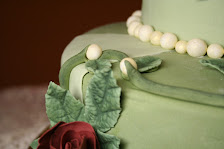

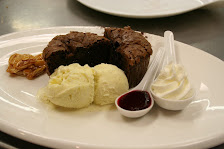
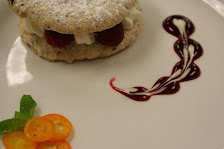
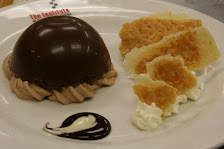
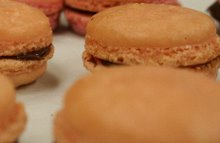
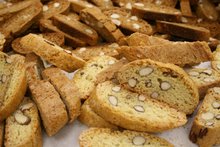
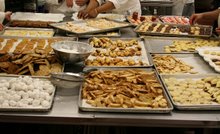



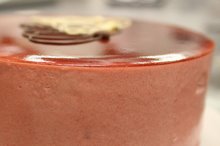



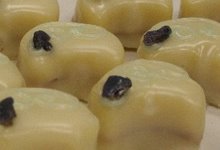
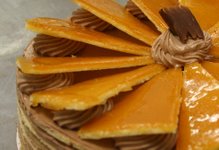



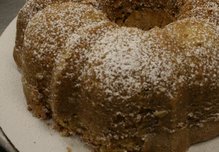
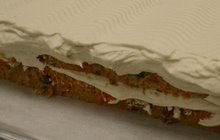


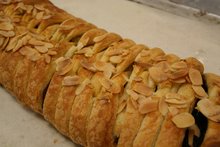






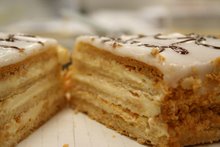
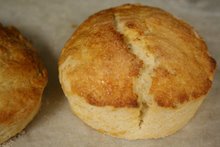


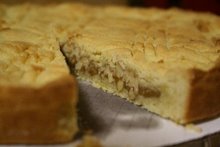












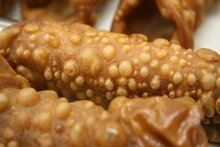


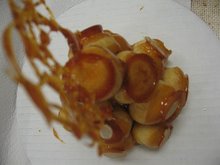
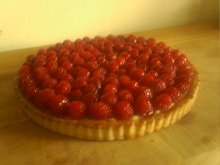


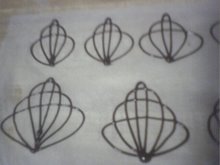


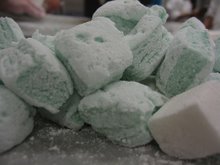

No comments:
Post a Comment